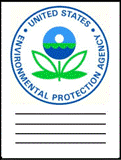United States Environmental Protection Agency

United States Environmental Protection Agency: Publications
Document Type
Article
Citation
United States Environmental Protection Agency. What Climate Change Means For Nebraska. August 2016. EPA 430-F-16-029.
Abstract
Nebraska’s climate is changing. In the past century, most of the state has warmed by at least one degree (F). The soil is becoming drier, and rainstorms are becoming more intense. In the coming decades, flooding is likely to increase, yet summers are likely to become increasingly hot and dry, which would reduce yields of some crops, require farmers to use more water, and amplify some risks to human health.
Our climate is changing because the earth is warming. People have increased the amount of carbon dioxide in the air by 40 percent since the late 1700s. Other heat-trapping greenhouse gases are also increasing. These gases have warmed the surface and lower atmosphere of our planet about one degree during the last 50 years. Evaporation increases as the atmosphere warms, which increases humidity, average rainfall, and the frequency of heavy rainstorms in many places—but contributes to drought in others.
Included in
Earth Sciences Commons, Environmental Health and Protection Commons, Environmental Monitoring Commons, Other Environmental Sciences Commons


Comments
Used by permission.